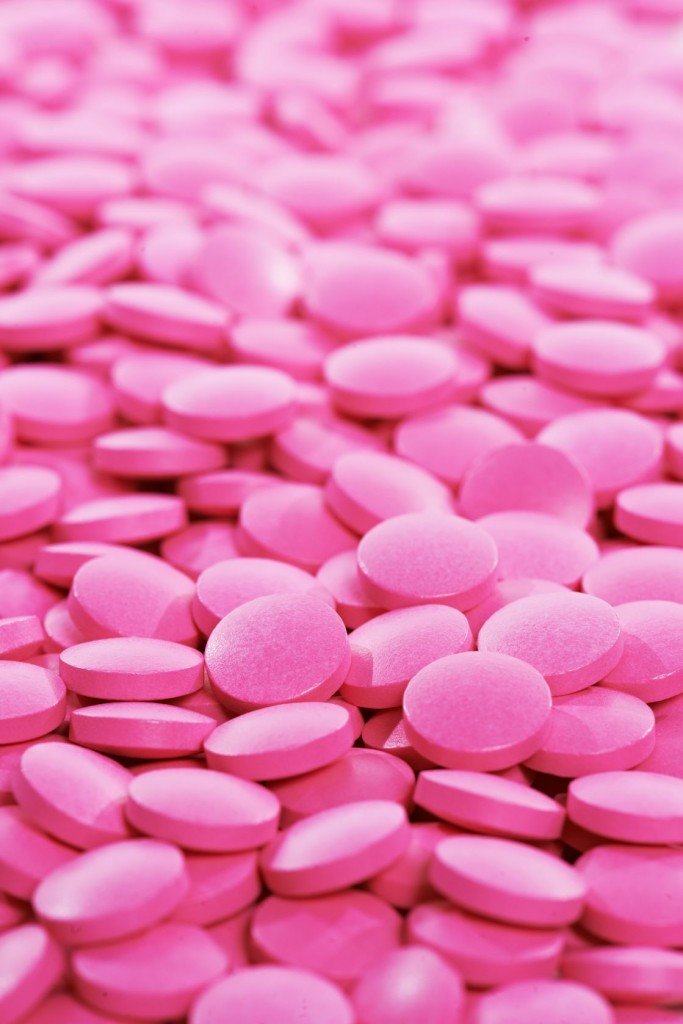Chad Goetz, ND
With dazed eyes, a dribbling of saliva coming out of her half-opened mouth, a greatly disheveled appearance and extreme tooth decay, all 84 pounds of Shannon slowly shuffled into the clinic at the River Source Naturopathic Treatment Center in March 2007 as a last-ditch effort to help break her devastating cycle of opiate dependency. Just a few short hours earlier, she had been discharged from a local-area hospital for bilateral pneumonia, with additional diagnoses of malnutrition, depression, anxiety, heart palpitations, hyperthyroidism and opiate withdrawal. Having unsuccessfully attempted to get off of the powerful and long-acting opiate methadone at a local community detox facility prior to her admission to the hospital, her family researched alternatives and discovered the River Source. Upon hospital discharge they brought her directly to us for detoxification and treatment.
Admittedly, I had great trepidation about accepting her as a patient upon seeing her extremely ill state, and yet in that moment I knew that if something was not done for her the possibility that she would die within the ensuing weeks was very high, as neither the hospital nor the detox facility had afforded her the level and type of care that she really needed to be given a new lease on life. My colleague, Dave Arneson, ND, who also worked at the River Source at that time, and with whom I shared the responsibility of treating Shannon during her stay, later commented that it was by far the worst case of a methadone withdrawal he had ever seen.
Medication Overload and Adjustment, the Allopathic Standpoint
Such was the initial introduction I had to Shannon, a 35-year-old female who had a five-year history of opiate use that began with prescriptions of oxycodone and morphine by her physician for the treatment of fibromyalgia, which was diagnosed in 2001. At the height of using these medications, she was taking 60mg of oxycodone BID along with 15mg of instant-release morphine about every three hours for breakthrough pain. Because of this regimen, opiate dependency quickly became an issue as her daily routine began revolving solely around the use of the medications. She eventually lost her job and friends and became, in her words, a hermit – living alone in her apartment and rarely venturing out unless absolutely necessary. Eventually, the oxycodone and morphine combination was abandoned when she was switched over to the extremely potent opiate methadone, dosed at 160mg per day over the course of two years. At this point, she finally realized that she wanted more out of life.
Shannon came to us on the following oral medication regimen initiated by her hospital physicians:
- venlafaxine extended-release capsules 75mg QD for depression
- buspirone 15mg BID also for depression
- lorazepam 5mg TID for anxiety
- megestrol 40mg QD for appetite stimulation
- famotidine 20mg QD for possible stomach ulcer
- methadone 5mg BID to abort the opiate withdrawals
- levofloxacin 750mg QD for pneumonia
Upon arrival to the River Source, the methadone was immediately discontinued, as was the venlafaxine and buspirone. The main reason for discontinuing the antidepressants – aside from philosophically disagreeing with the need for antidepressants in general – is that depression is certainly to be expected in this situation, as anyone experiencing what Shannon was in that moment could be nothing but extremely disheartened and depressed. Trying to mask this with more chemicals is counterproductive and only potentiates the mentality of relying on medications to address deeply rooted issues – a mentality that is, of course, extremely common within the drug addicted population.
Given that extreme anxiety is a common symptom of opiate withdrawal, and given that I have had only limited success with specific homeopathics with these cases in the past, I agreed to keep her on the prescribed lorazepam regimen, while adding alprazolam 2mg QHS to help facilitate sleep – a medication similar to Ativan, but generally with more sedative potential, as persistent insomnia is always one of the more troubling symptoms of withdrawal. Promethazine 25mg q6-8h as needed was also added initially to help afford some temporary relief from nausea that would soon begin. The remaining medications of megestrol, famotidin and levofloxacin were all discontinued later on during her first week in treatment.
From a physical standpoint, Shannon presented with severe cachexia. Initial vital signs revealed a blood pressure of 98/68mmHg, temperature of 99.9˚F, respirations 16 and pulse 80bpm with regular rate and rhythm. A focused physical exhibited normal heart sounds, no murmurs, clicks, gallups or rubs; a soft, non-tender abdomen with bowel sounds in all four quadrants; and diminished breath sounds in both lungs with mild crackles in the bases bilaterally, a finding that resolved over the ensuing weeks. Her vitals remained stable throughout her stay, with the exception of tachycardia (which returned with removal of the methadone), which was confirmed to be due to hyperthyroidism with subsequent laboratory evaluations and which was treated after her stay at the River Source.
Opiates and the Opiate Withdrawal Syndrome
Oxycodone and morphine are both potent opioid analgesics derived from the opium poppy (Papaver somniferum) with a high potential for physical dependency and abuse. Although the opium poppy has about 25 different alkaloids, it is codeine, morphine, thebaine (from which oxycodone is derived) and papaverine that exhibit the most biological activity on the central nervous system. The synthetic opiate methadone was developed in Nazi Germany initially for military use as an analgesic substitute to morphine on the battlefront in the late 1930s. Despite the fact that the Germans concluded that methadone was too toxic and had too much addictive potential for general use, the drug made its way into the U.S. in 1947 as an inexpensive analgesic. Although methadone continues to be used for pain management by allopathic physicians, it is better known for its use in aborting the opiate withdrawal syndrome of heroin addicts, a purpose for which it has been employed in the U.S. since the 1960s, despite the fact that a detox from methadone is far more difficult than one from heroin.
Typically, opiate withdrawal begins 6-12 hours after the last dose in the case of the shorter-acting opiates, or 24-36 hours with long-acting opiate methadone. The duration usually lasts 7-10 days in the case of heroin, morphine, hydrocodone and oxycodone, whereas the withdrawal of methadone lasts a minimum of 14 days, but it is not uncommon for it to continue 4-8 weeks without adequate treatment. During the acute withdrawal phase, all of the following physical symptoms are usually exhibited, and Shannon was no exception: rhinorrhea, anorexia, nausea, vomiting, diarrhea, diaphoresis, lacrimation, bone pain, diffuse muscle aches, abdominal cramping, leg cramping, piloerection, yawning, anxiety, tachycardia, extreme restlessness and insomnia. This conglomeration of symptoms is so incredibly uncomfortable for most individuals that they simply give up and go back to using opiates just to feel “normal.” With naturopathic and homeopathic treatment, however, as Shannon’s experience exhibits, this unfortunate conclusion for many simply does not need to be the case.
Naturopathic and Homeopathic Steps Taken on the Road to Recovery
From the start, it was clear that Shannon would require a much higher level of treatment than is normally necessary in the vast majority of opiate withdrawal cases. The first step was to provide all that we could nutritionally via the intravenous route, given her anorexia. Her first treatment involved 500mL lactated ringers for rehydration with 4cc (500mg/mL) of extra magnesium to help relax her (which provides exceptional temporary relief to anxiety, restlessness and muscle cramps in these cases), followed by a 250mL sterile water nutrient IV with the following ingredients:
- 2cc B-complex
- 2cc Dexpanthenol (250mg/mL)
- 2cc Pyridoxine (100mg/mL)
- 3cc Magnesium (500mg/mL)
- 2cc Calcium gluconate (20mEq/mL)
- 20cc Ascorbic acid (500mg/mL)
- 1cc Folic acid (10mg/mL)
- 2cc Cyanocobalamin (1000mcg/mL)
- 5cc Selenium (40mcg/mL)
- 5cc Zinc (1mg/mL)
This combination of lactated ringers followed by a nutrient IV was continued on a daily basis during the first month of treatment. In addition, we added limited use of separate IV lipid drips to provide a source of fats and calories, as well as the periodic alternating use of 20cc of dextrose 50% and 60cc of free amine protein to her nutrient IV. This protocol produced noticeable results in just the first week, as evidenced by the obvious improvement in her skin color, increase in energy and mental affect. As Shannon’s overall health status improved, the frequency and intensity of the IV regimen was reduced significantly during the second month of her stay to one basic 250mL nutrient IV (at half the strength of the aforementioned protocol) 3-4 times per week.
In addition to the heavy use of IVs was the use of frequent doses of homeopathic Opium. I have attempted countless times to provide homeopathic relief to opiate withdrawal cases and have only a few times observed the ”strange, rare, and peculiar” symptoms that clearly pointed to specific remedies such as China officinalis, Phosphorus or Arsenicum album, which for those cases worked extremely well. For the vast majority, however, an individual’s experience involves the symptoms as described above without any uniquely defining characteristics. In over a year-and-a-half of attempting to deal with these difficult cases, and feeling that each time I was giving well-indicated remedies that ended up doing virtually nothing, I became frustrated and ultimately decided to try homeopathic Opium as a last resort. It is unfortunate that I had not tried it sooner, as the results were quite impressive. Clearly, this is more isopathic than homeopathic, but in an acute opiate detox anything that provides such obvious relief can only be welcomed. This is not to suggest that the Opium instantaneously removes every symptom, but it affords great relief for most of them in my experience.
The more resistant symptoms are anxiety and insomnia, which was also the case for Shannon. She was started the first night on Opium LM20 in a 4oz dropper bottle dosed 2 droppers under the tongue every 15-30 minutes while awake. This may appear to be an extreme dosing regimen, but without such repetition the withdrawal quickly regains its footing and comes back with a vengeance. At one point, Shannon had dropped the glass remedy bottle and went almost an entire day without it, and that same night she had a return of recurrent and powerful episodes of vomiting bile and extreme diarrhea. Once the remedy was restarted, the troubling setback of symptoms resolved.
Shannon required steadily increasing strengths of Opium over the course of two months, moving from LM20 to LM30, to LM40 and, finally, to LM50, after which point it was discontinued entirely as she was restored to health. Usually in methadone detox cases, an individual only needs to be on the Opium for two, maybe three weeks, and usually at a lower strength than what Shannon required. However, given the severity of her situation overall, she was unique in requiring higher and higher strengths administered over a longer period of time.
By the end of her first week, Shannon was improving such that she could tolerate a limited amount of food without vomiting, so Dr. Arneson began her on his oral supplement protocol for opiate detoxification cases. This includes:
- A comprehensive amino acid formulation (L-tyrosine, L-lysine, L-methionine and 5-HTP) to help restore the neurochemistry circuits of the brain by balancing out the monoamines (serotonin and dopamine) and the catecholamines (norepinephrine and epinephrine)
- A high-potency multivitamin/multimineral
- Fish oils to support general cellular integrity and functionality
- An adrenal support formula to help facilitate the restoration of the hypothalamus-pituitary-adrenal axis that is disrupted in cases of long-term opioid abuse
- A natural source of L-dopa is also utilized in the form of Mucuna pruriens to further enhance the restoration of the dopamine neurochemistry circuit.
This protocol, along with the IVs, is very important in helping to rebuild an individual on the nutritional, biochemical level, as patients are always depleted when they come in for treatment.
Treatment Resolution
As the saying goes, a journey of a thousand miles begins with a single step. By agreeing to come to the River Source, Shannon took the first step and only two short months later she had completed the most dangerous terrain of her long journey toward sobriety from opiates. Through the focused use of the appropriate naturopathic, homeopathic and allopathic therapies, combined with the utilization of the 12-step approach to drug addiction and counseling that was provided, Shannon, who now weighed 117 pounds, found herself restored to a level of physical, mental, emotional and spiritual well-being she said she had not enjoyed for years. Shortly after being discharged from our care, Shannon reentered society as a very happy and productive member, evolutionary leaps above the state she occupied before being introduced to our medicine, to which she remains ever grateful.
 Chad Goetz, ND graduated from SCNM in 2004 and shortly after graduation began to work with drug addiction recovery specialist Dave Arneson, ND. Since May 2007, he has been the medical director at the River Source and routinely performs medical detoxes from all drugs of abuse. Homeopathy is his passion, and in seeking to advance his application of Hahnemann’s methods, he has studied with Jeremy Sherr, RSHom, as well as the highly regarded master homeopath Vega Rozenberg, RSHom at his ESSH School of Homeopathy.
Chad Goetz, ND graduated from SCNM in 2004 and shortly after graduation began to work with drug addiction recovery specialist Dave Arneson, ND. Since May 2007, he has been the medical director at the River Source and routinely performs medical detoxes from all drugs of abuse. Homeopathy is his passion, and in seeking to advance his application of Hahnemann’s methods, he has studied with Jeremy Sherr, RSHom, as well as the highly regarded master homeopath Vega Rozenberg, RSHom at his ESSH School of Homeopathy.





